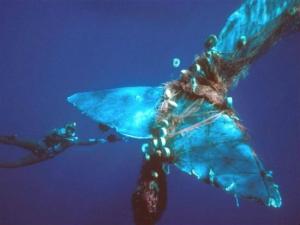
New Net Reduces Bycatch
Six years ago, the Norwegian coast guard filmed a Scottish fishing vessel riding gray swells, dumping 5 metric tons of dead fish back into the North Sea. Over the European Union catch quota,and unable to keep all the fish they'd caught, the fishermen had to ditch some. To the Norwegians, who aren't part of the EU and hold a strict discards ban, the waste was shocking.
When this news reached Dan Watson, a young British designer, it became the inspiration forSafetyNet, an ocean fishing net that allows certain fish to escape via lighted rings, offering more catch selectivity. The Scottish fishermen's predicament, he believed, was driven by their lack of control. "There can be no villains, there can be no victims, there are just problems," Watson said. "I started this project because I wanted to go some way towards solving that problem."
Watson joins a growing number of innovators designing more selective fishing gear to reduce bycatch — the unwanted fish, dolphins, whales and birds that get scooped up by longlines, gillnets and trawlers each year and then discarded. Globally, the amount of marine life that is wasted or unmanaged — which makes it potentially unsustainable — forms about 40 percent of the catch.
"The way we catch now is to catch everything, decide what we want to keep and discard the rest," said Martin Hall, head of the bycatch program at the Inter-American Tropical Tuna Commission, which regulates tuna fishing in the eastern Pacific Ocean.
Bycatch can result in overfishing, reduces the population of species that already might be endangered and, on the largest scale, interrupts food chains and damages whole ecosystems. It also amounts to an enormous waste of valuable fish protein.
